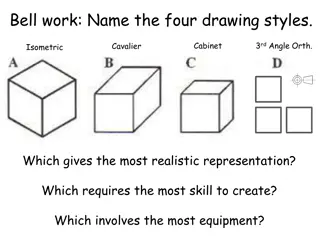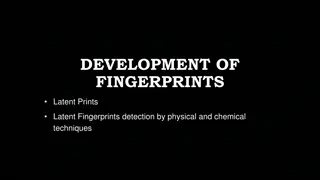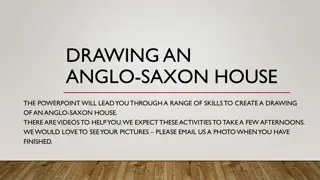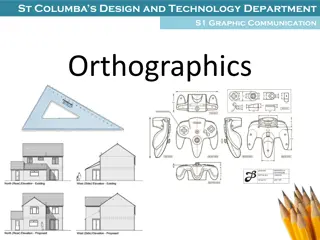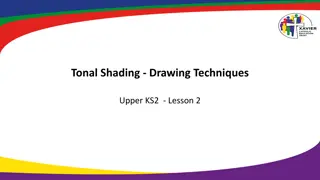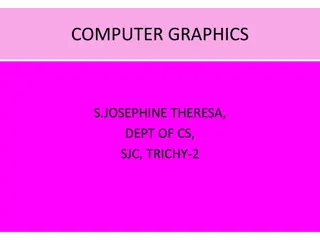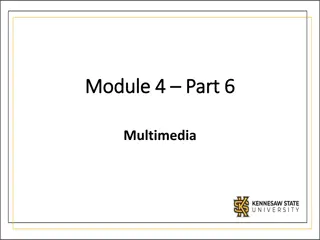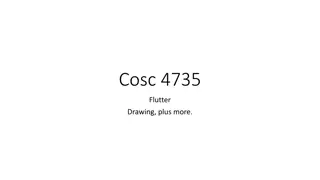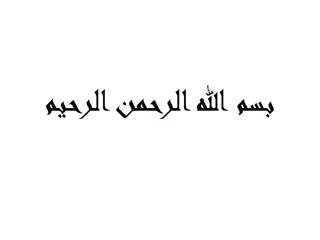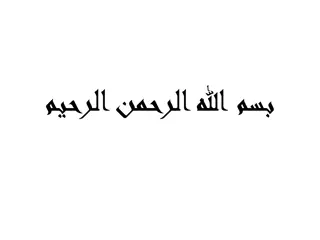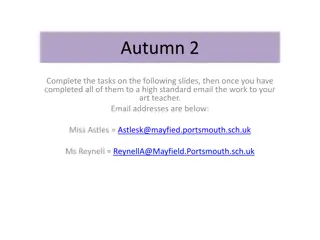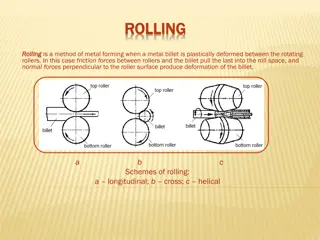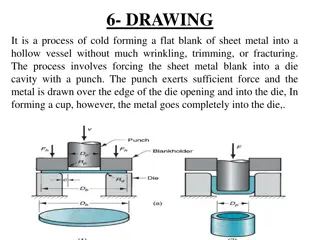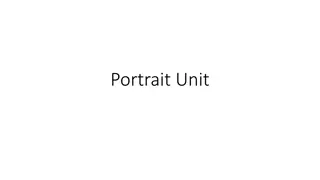Exploring Different Techniques in Drawing
Discover alternative methods to pure contour lines in drawing to enhance depth, texture, and value. From varying line density to utilizing gradations of tone, artists can create impactful illustrations. Learn how artists like Van Gogh and Seurat incorporated various lines and marks in their works to elevate their drawings.
Download Presentation

Please find below an Image/Link to download the presentation.
The content on the website is provided AS IS for your information and personal use only. It may not be sold, licensed, or shared on other websites without obtaining consent from the author. Download presentation by click this link. If you encounter any issues during the download, it is possible that the publisher has removed the file from their server.
E N D
Presentation Transcript
Most Beginning Students have a fallback: Pure Contour Line or Outlining
The drawbacks Very tough to show foreshortening. Hard to show texture or volume Hard to show affects of light
If you vary you line density/pressure, you can achieve more depth and texture.
Value light/dark In drawing, we use gradations of tone from light to dark to create the illusion of form and to describe the direction and flow of light. Value refers to the relative lightness or darkness of a perceived surface. Here are some ways we show value using line and mark. Add these to your toolkit, and you will have the ability to go beyond pure contour.
Sixth Alternative to Contour Line (Outlining)
Vincent Van Gogh combined many kinds of lines and marks to make his drawings
Stop. Lets make marks and lines differently than we have before. Quick sketches of your hand with pencil or charcoal pencil. Hold the pencil or charcoal pencil in a different way than you usually do. There is no real reason that we have hold a pencil as we hold a pen, it is just habit. You will make a different mark if you hold it differently Use all of the tool. Pencils can be hand sharpened with the Exacto knife to have a long tip. This way you can use the side as well as the tool to make a variety of marks. Experiment with the pressure you put on the drawing tool. Practice making light marks to dark. Don t always turn the same direction. If you always make your lines or marks from left to right, try the opposite. Try clockwise vs. counter clockwis emarks when scumbling or making curving lines. Let go of outlines, at least for a few days. Let your al lines be short runs that do not circumscribe a form, but build it with light and dark. You can also do away with entirely with line, focusing on stippling. * Set aside your mechanical pencils. While good for some things, they break if you add pressure and only make one type of line. BORING.
Usually it Is best for the student to first explore their ability to make a wide range of tonalities and marks with a particular medium (ink, charcoal, soft pencil or a digital pencil or pen.) For your first experiment use pressure and density of stroke to establish a light tones, mid-tones and dark tones. Lighter and thinner marks with more space between them for lighter tones. Bring marks closer, make them wider and use more pressure as you move into the darkest areas of the value scale.
After being able to make a basic value scale, try making alternative value scales using any of the methods listed earlier. 1.Hatching 2.Cross-Hatching 3.Scumbling 4.Random Hatching 5.Contour Hatching 6.Stippling
Make at least three value scales, trying out three different value techniques.
After youve done this, pick your favorite technique. You will use this to draw your evocative object against first a light background and then a dark background. Tips: Map out your composition with LOOSE, LIGHT LINES. Map out areas of light dark and mid-tones, like the Notan analysis of a painting agin with light pencil. Make sure you understand where your object falls on the value scale. Color has relative value you can take a photo of your object and convert it to black and white to get an idea where it falls. Then begin with the lightest areas and apply your lightest value scale marks. Then move on to mid-tones and darker areas. Consult your value scale as you go. Materials: (your choice) charcoal pencil, pencil then ink, pen or pencil tools in Photoshop, without any blur effects.
Example of a preliminary sketch, a value map of lights and darks, labelled with a number that corresponds to the value scale.
Example of finished drawing. The artist, Wayne Thiebaud, uses simple hatching to show variations of light and dark, depth (value).


